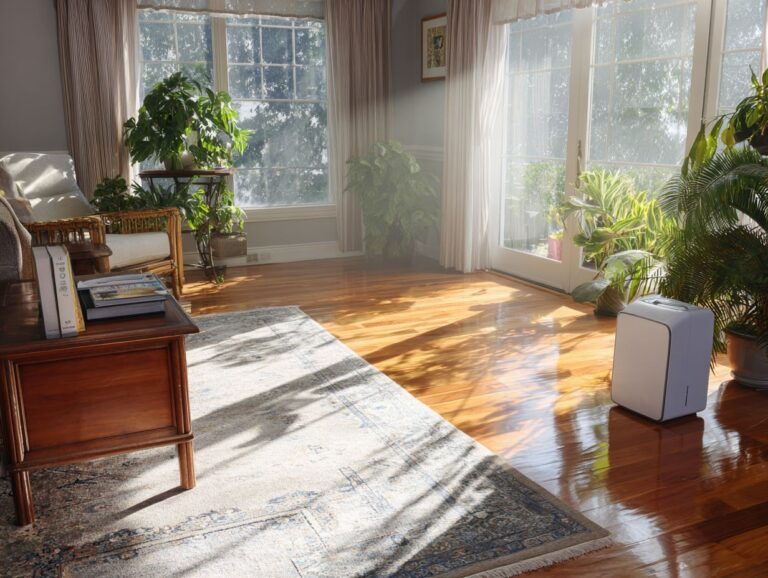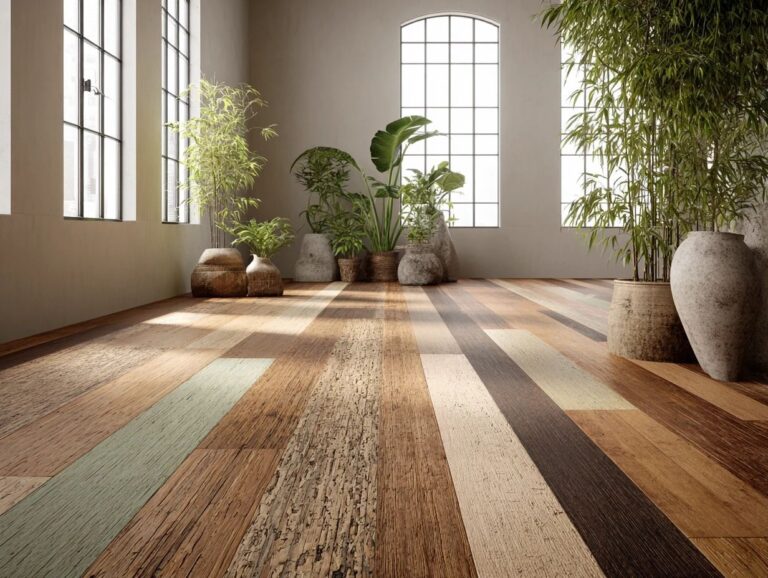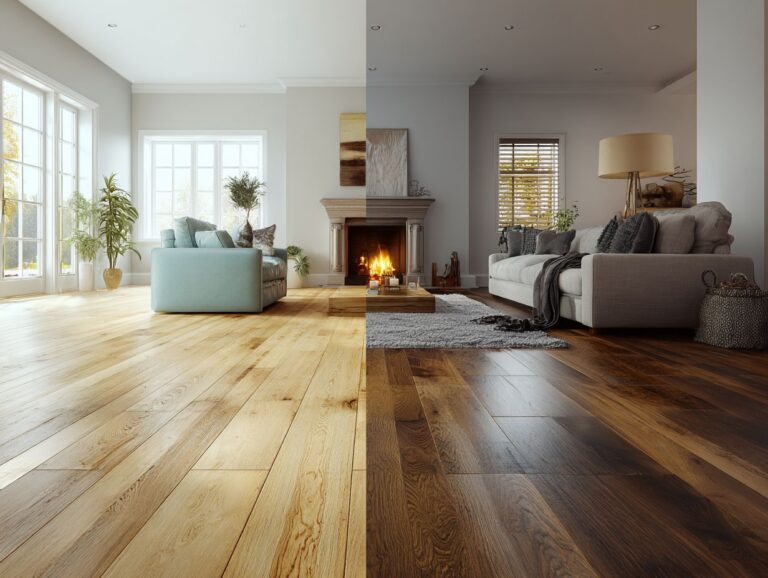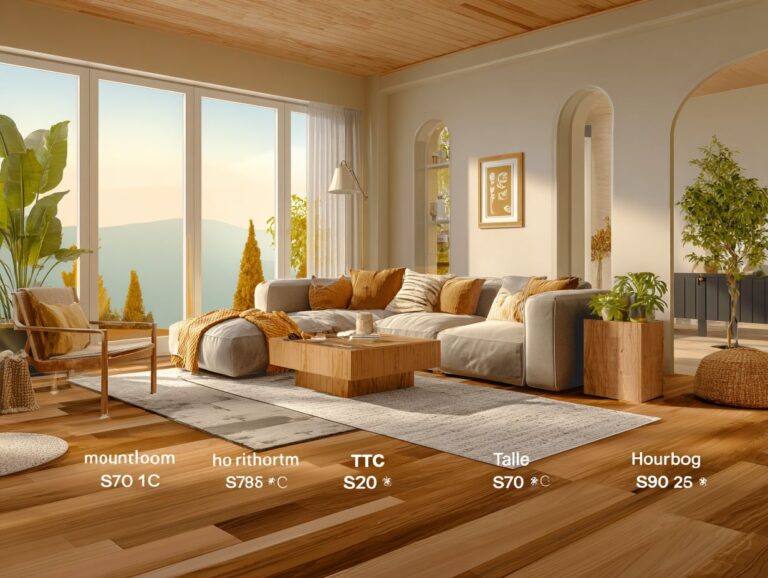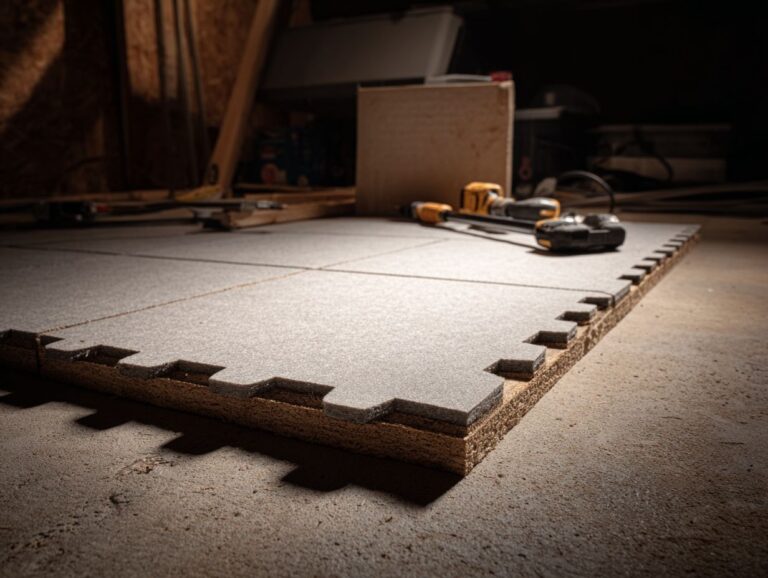Entryway and Mudroom Flooring – First Impression Guide
Your entryway and mudroom set the stage for your home’s first impression, so choosing the right flooring is essential. With many flooring choices available, including long-lasting ceramic tile and flexible luxury vinyl, you can improve both appearance and usefulness. This guide discusses why flooring is important in your mudroom. It explains how to take care of it and explores different styles to help you make a long-lasting choice.
Key Takeaways:
Contents
- Choosing the Right Flooring Material
- Key Considerations for Entryway and Mudroom Flooring
- Popular Flooring Trends
- Entryway Flooring Trends and Statistics
- Installation Considerations
- Flooring Maintenance Tips
- Frequently Asked Questions
- What are some popular flooring options for entryways and mudrooms?
- How do I choose the best flooring for my entryway and mudroom?
- Is it important to have a durable flooring for high-traffic areas like entryways and mudrooms?
- Can I use the same flooring for my entryway and mudroom?
- What are the benefits of using tile for entryway and mudroom flooring?
- Is it necessary to use a doormat or rug in entryways and mudrooms?
Importance of Flooring in Entryways
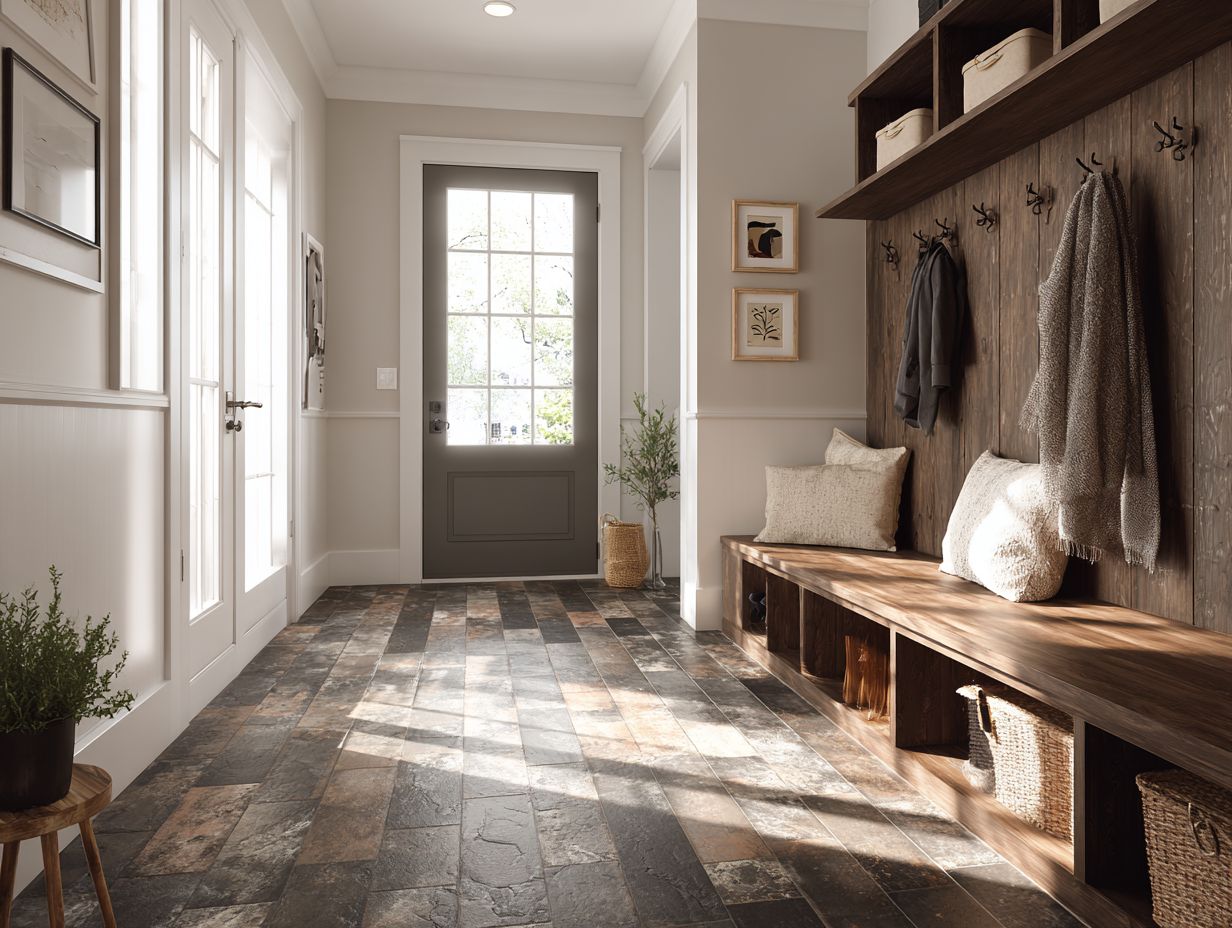
Entrance floors need to handle lots of people walking over them and should look impressive, so choosing the right material is very important.
Consider durable options like porcelain tile or luxury vinyl, both renowned for their resilience and style.
Porcelain tiles are durable and suitable for high-traffic homes. Luxury vinyl is softer to walk on and is available in many designs to fit your style.
For instance, a glazed porcelain tile design can mimic natural stone, providing elegance, while planks of luxury vinyl can replicate hardwood, giving warmth.
Both choices resist stains and scratches, ensuring your entryway remains impressive even amidst daily hustle.
Overview of Mudroom Functions
Mudrooms serve as transitional spaces designed for storage, cleanliness, and organization, with flooring that meets unique needs.
Picking the right flooring for your mudroom can greatly improve how it works. Luxury vinyl tiles resist water and are easy to clean, which makes them perfect for handling dirt and moisture.
Tile flooring, such as porcelain or ceramic, can add durability and resistance against scratches, especially beneficial in high-traffic areas. If you prefer a warmer touch, consider cork flooring, which is soft underfoot and also eco-friendly.
Each of these options can be paired with built-in storage solutions like benches or hooks to create an efficient, welcoming space.
Choosing the Right Flooring Material
Choosing the right flooring material requires thinking about how long it lasts, the cost, and how easy it is to clean, especially for entryways and mudrooms. Curious about which flooring options offer the best water resistance? Our analysis explains the key factors.
Hardwood Flooring
Hardwood flooring looks great and feels cozy, which is why many homeowners prefer it. However, it does need regular care.
To choose the right hardwood for your mudroom, consider both style and durability. Opt for stronger species like oak or hickory, priced around $8-$14 per square foot, ensuring they can withstand moisture and foot traffic.
Regular maintenance includes cleaning to remove dirt and applying a protective layer every few years to prevent water damage.
Walnut wood combined with a light area rug increases visual appeal and also makes your mudroom welcoming and useful.
Laminate Flooring
Laminate flooring is durable and budget-friendly, making it a great option for homeowners who want a chic appearance without high costs.
With prices ranging from $1 to $5 per square foot, laminate flooring is ideal for those on a budget. It’s also easy to install, often requiring just a few tools like a saw, tape measure, and rubber mallet.
Popular designs include patterns that mimic oak, cherry, or even stone textures, providing versatility in aesthetics. For example, brands like Pergo offer a variety of styles, from classic wood looks to sleek, modern designs, making it easy to choose the perfect match for any home decor.
Tile Flooring
Tile flooring, especially ceramic and porcelain, is well-known for being strong and water-resistant, which makes it perfect for mudrooms and entryways.
Tile offers slip resistance, especially when textured surfaces are chosen, enhancing safety. Cleaning is simple because spills can be quickly wiped away without leaving stains, and regular mopping keeps it looking clean.
For an appealing design, consider herringbone patterns or large-format tiles, which can create a sense of space. For example, a sleek gray porcelain tile can complement a modern aesthetic, while colorful patterned tiles can serve as a striking entryway feature.
The versatility in style and function makes tile an excellent flooring choice.
Vinyl Flooring
Luxury vinyl flooring merges comfort with practicality, offering a soft underfoot while being highly resilient against scrapes and stains.
Unlike traditional vinyl, which can peel or tear, luxury vinyl maintains its integrity even in high-traffic areas. It is designed to withstand moisture, making it perfect for places like mudrooms or kitchens.
For example, brands like COREtec provide lively designs that look like hardwood or stone, costing between $2 and $6 per square foot. Maintenance is a breeze; a simple sweep and occasional damp mop keep it looking fresh.
Luxury vinyl is a great option for homeowners who want both attractiveness and practicality because it lasts long and looks good in different styles.
Carpet Options
Carpet tiles provide excellent comfort and warmth, offering a softer option for mudrooms, though they may require more frequent cleaning.
Traditional carpets can be expensive, costing between $3 to $10 per square foot and typically require professional installation. In contrast, carpet tiles are more affordable, ranging from $1 to $5 per square foot.
They also allow for easy replacement of individual tiles in case of stains or damage, eliminating the need for cumbersome cleaning methods.
Another benefit is the wide range of styles; you can design distinct patterns and color mixes, giving a personal feel while staying functional.
For maintenance, simply vacuum regularly and use a damp cloth for spot cleaning to keep them looking fresh.
Key Considerations for Entryway and Mudroom Flooring
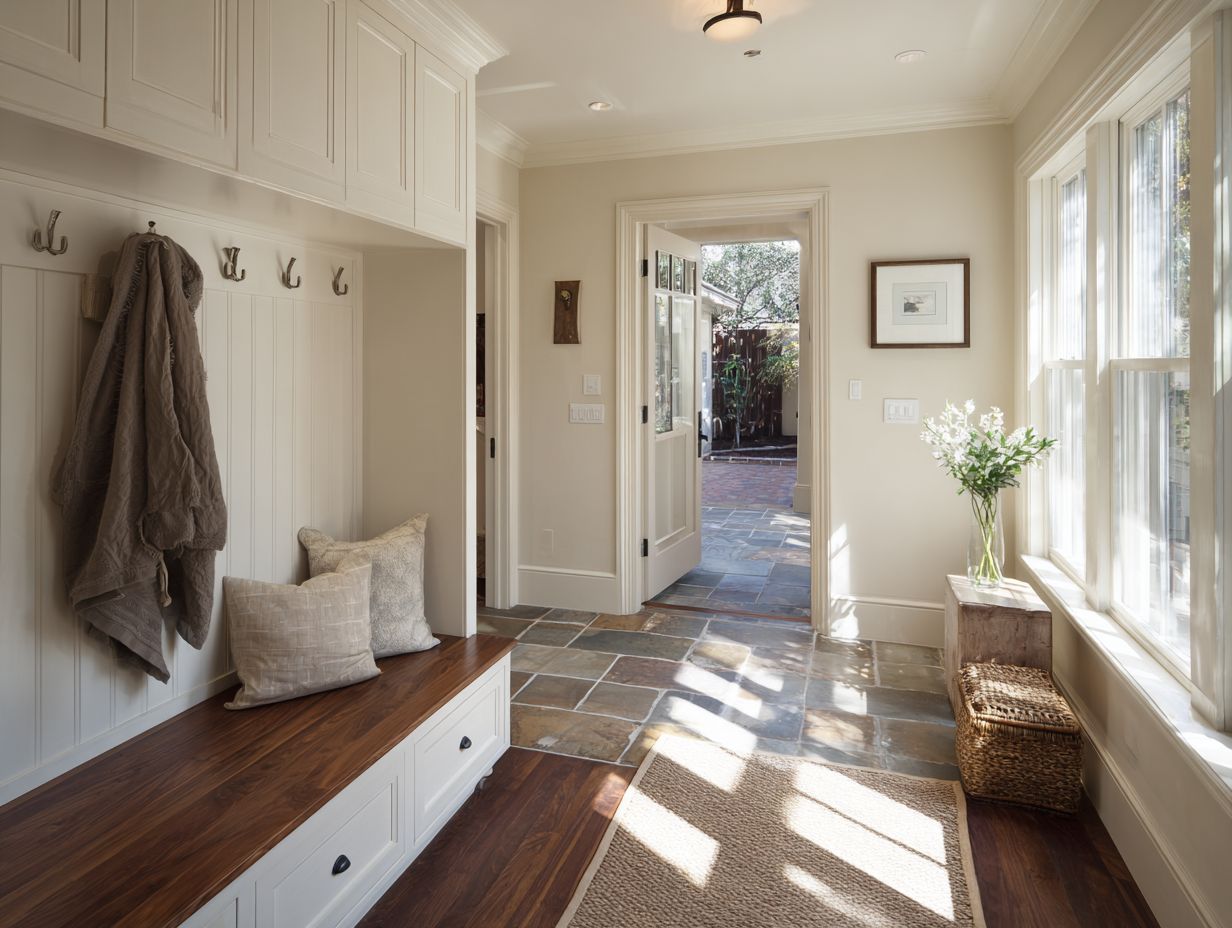
When choosing flooring for entryways and mudrooms, you should focus on how long it lasts, how easy it is to clean, and how well it handles water and prevents slipping.
Durability and Maintenance
Durable flooring is essential in high-traffic areas, with specific materials offering varying levels of maintenance needs and long-term value.
Hardwood flooring needs regular sweeping and sometimes refinishing. With proper care, it can last 20 years or longer. In contrast, laminate flooring is easier to care for, needing just a damp mop occasionally, and it typically lasts around 10-15 years.
Vinyl flooring stands out as the least demanding, requiring minimal maintenance while offering a lifespan of 10-20 years.
Creating a schedule for cleaning-sweep hardwood floors weekly, mop laminate floors every two weeks, and clean vinyl floors monthly-will help maintain your flooring well.
Water Resistance
Water-resistant flooring is critical for mudrooms to combat moisture from wet shoes and outdoor gear, protecting the underlying structure.
A few effective flooring options include:
- luxury vinyl planks (LVP), which offer a waterproof surface ideal for high-traffic areas.
- Tiles, particularly porcelain, are also excellent due to their low porosity and durability against moisture.
- wood laminate products with water-resistant seals for durability.
When selecting flooring, consider installing a moisture barrier underneath for additional protection.
Use tests such as the water droplet test on samples to see how each material absorbs moisture, helping you make an informed choice.
Slip Resistance
It’s important to prevent slipping in entryways and mudrooms, as wet or muddy floors can cause accidents.
To make surfaces less slippery, think about using materials like textured ceramic tiles, rubber flooring, or treated wood.
Textured tiles can provide better grip; for instance, Daltile’s Quarry tiles are designed specifically for high-traffic areas. Rubber flooring, like that from Gerflor, offers cushioning and excellent traction, ideal for homes with children or elderly residents.
Choosing a matte finish on treated wood improves grip and keeps it looking good. Adding non-slip coatings to current surfaces can improve safety without needing big construction projects.
Aesthetic Appeal
The aesthetic appeal of flooring significantly influences the overall design of entryways and mudrooms, contributing to a stylish, welcoming environment.
To improve the visual appeal, use luxury vinyl planks (LVP) for a modern look and resistance to moisture. Using natural colors with bright highlights can make an eye-catching combination. For instance, light oak floors matched with a bright blue rug.
Incorporating textured tiles can provide both style and slip resistance. Always factor in functionality by selecting materials that can withstand heavy foot traffic, such as porcelain tiles.
In the end, picking the right flooring improves both the look and the functionality of these spaces.
Popular Flooring Trends
Today’s flooring trends focus on environmentally friendly materials, varied textures, and new patterns, giving homeowners fashionable choices that match current principles.
Entryway Flooring Trends and Statistics
Entryway Flooring Trends and Statistics
Flooring Trends 2025: Popularity of Materials
Flooring Trends 2025: Design Trends
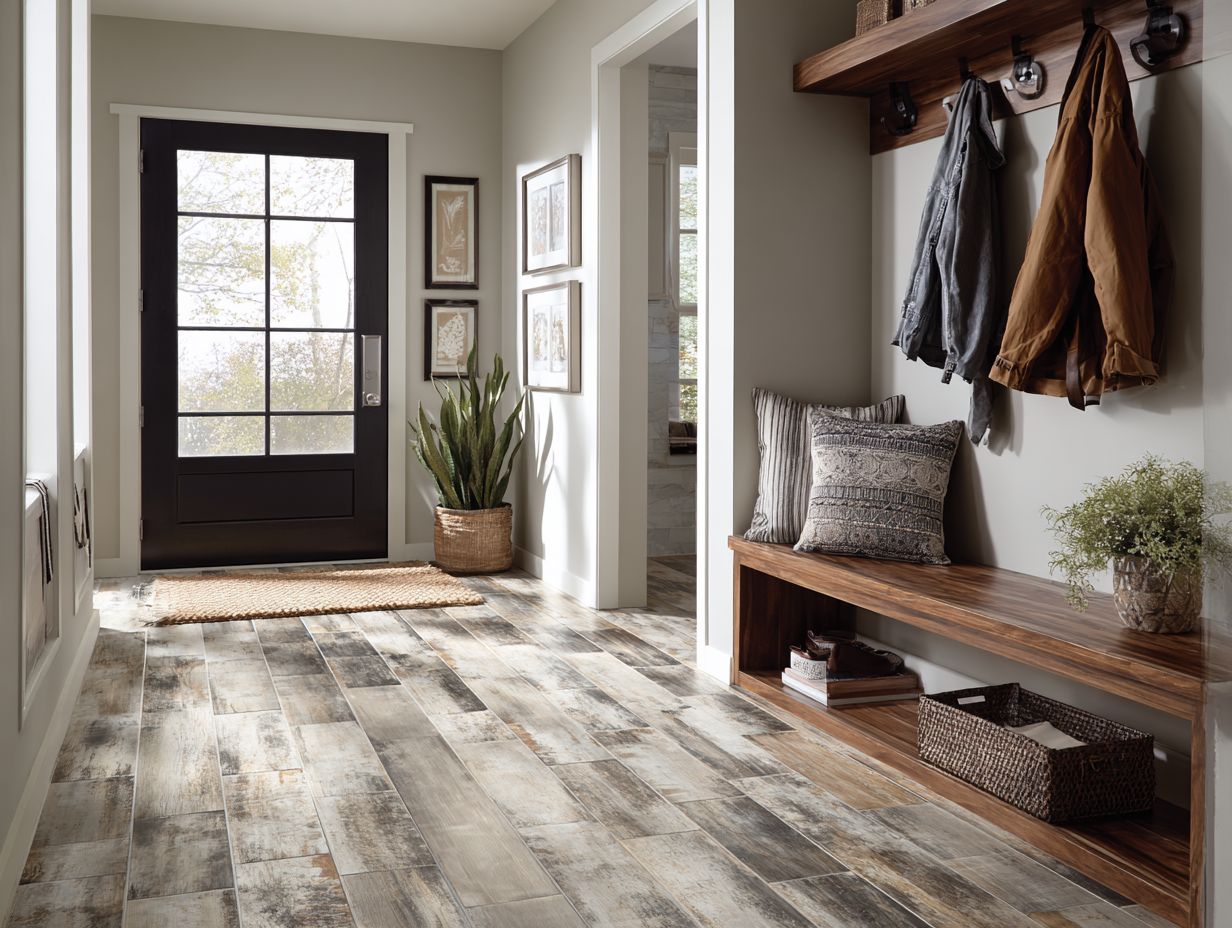
The Entryway Flooring Trends and Statistics for 2025 shows information about popular materials and design preferences, showing how consumer tastes are changing. This data provides a snapshot of the flooring industry’s direction, especially for entryways, which are often the focal point of interior design.
Flooring Trends 2025 showcase the dominance of warm woods, which occupy 40% of the market. People love them because they make homes feel cozy and stylish, making them a popular choice for those who want both beauty and comfort. Alongside, sustainable materials account for 30%, reflecting a growing consumer consciousness towards eco-friendly options. This trend shows awareness of environmental matters and points to a change in the market towards products that last longer and have less impact on the environment.
- Luxury Vinyl Tiles (LVT): Representing 20%, LVT is favored for its versatility and cost-effectiveness. Its ability to mimic natural materials while offering durability makes it suitable for high-traffic areas like entryways, appealing to both aesthetic and practical needs.
In terms of Design Trends, textural cut and loop carpets 35%, indicating a preference for texture and comfort underfoot. These carpets add dimension and are often used to create focal points in entryways. Parquet flooring25% share, shows a return to old-fashioned styles, attracting people who enjoy detailed designs and traditional looks. Meanwhile, botanical designs 15% show an interest in nature-inspired motifs, merging indoor spaces with outdoor influences.
- Warm woods are the top choice for creating inviting and natural spaces.
- Sustainable materials meet eco-friendly demands and offer durability.
- LVT provides versatility and cost-effectiveness for high-traffic areas.
- Textural carpets add comfort and depth to entryway design.
- Parquet flooring appeals to lovers of vintage and classic designs.
- Botanical designs bring nature-inspired elements indoors.
Overall, these numbers highlight how style choices and environmental factors influence the direction of entryway flooring design. As trends evolve, manufacturers and designers will need to balance style, sustainability, and functionality to cater to consumer demands.
Eco-Friendly Options
Eco-friendly flooring options are rising in popularity, with materials like bamboo and cork providing sustainable choices that do not compromise on style.
Two popular eco-friendly flooring materials are bamboo and cork.
Bamboo costs between $3 and $7 per square foot, is durable, and works well in busy areas, making it a good option for homes.
Cork, priced at $4-$8 per square foot, offers excellent insulation and sound absorption but requires regular sealing for moisture resistance.
Successful installations often showcase these materials in contemporary designs, with bamboo lending a sleek, modern look, while cork brings warmth and texture to living spaces.
Choosing these materials supports sustainability without sacrificing aesthetic appeal.
Textured Finishes
Textured finishes in flooring create visual and tactile interest, enhancing the overall aesthetic and providing functional benefits like slip resistance.
When choosing between matte and glossy finishes, consider the room’s function.
Matte finishes work well in busy areas like hallways because they cover marks and scratches, while glossy finishes can add a touch of class to places like dining rooms or offices.
For instance, a matte ceramic tile in a contemporary kitchen offers both style and practicality, while a glossy hardwood in a formal living room adds a touch of sophistication.
Assess your design goals and daily needs to select the best texture for each area.
Color Trends
Flooring color choices often mirror wider design changes. Current styles feature warm, neutral tones and bright colors that define the look of modern entryways and mudrooms.
In recent updates, cozy shades like light taupe and creamy beige make spaces welcoming, often combined with bright colors like teal or mustard for a striking effect.
For instance, a mudroom might feature muted oak flooring complemented by teal cabinetry.
On the other hand, strong colors like deep blue or forest green increase visual appeal and create a feeling of calm.
Choosing the right flooring is important. Bamboo is a good choice for those who want environmentally friendly options that also look good.
Installation Considerations
Choosing flooring involves thinking about installation details, which affect costs and whether to install it yourself or hire experts. For those considering different materials, understanding the nuances can be crucial-our guide on Linoleum vs Vinyl elaborates on these differences to help you make an informed decision.
DIY vs. Professional Installation
Choosing between DIY and professional installation depends on budget, skill level, and the complexity of the chosen flooring material.
For DIY installations, tools like a miter saw, adhesive, and a flooring nailer are essential.
Keep in mind the time needed for installation; simple materials such as laminate can be put in place in a single day, while tougher materials like hardwood may take several days. Hardwood needs time to adjust and requires exact cutting.
Hiring experienced workers ensures expertise and excellent results, with costs ranging from $2 to $6 per square foot. For instance, a 1,000 sq. ft. area could cost between $2,000 and $6,000.
Evaluate your project’s size and your comfort level with tools before deciding.
Cost Factors
Knowing the price elements of different flooring options helps homeowners choose wisely and stay within their budget.
When comparing flooring options, consider the following costs:
- Hardwood flooring averages $5-$10 per square foot, requiring installation fees that can reach $12 per square foot.
- In contrast, laminate offers a budget-friendly alternative at $1-$3 per square foot, with lower installation costs.
- Luxury vinyl planks cost between $2 and $5 per square foot and are usually simpler to install, which makes them a favorite among DIY fans.
Think about maintenance-hardwood may require sanding and polishing every 5-10 years, while laminate typically requires minimal upkeep.
Flooring Maintenance Tips
Maintaining your entryway and mudroom floors keeps them durable, attractive, and practical.
Cleaning Regimens
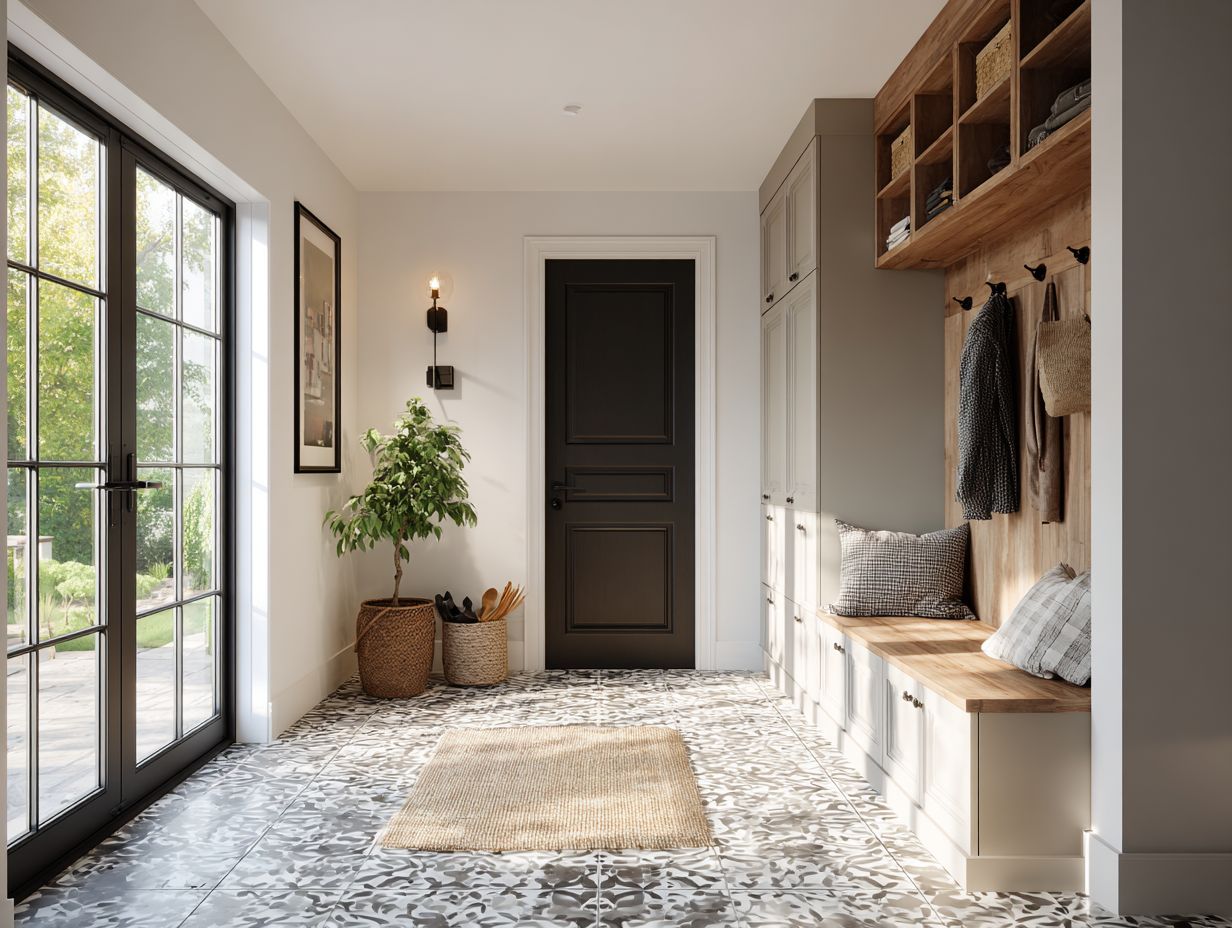
Creating good cleaning routines for different types of floors is important to keep them looking good and lasting a long time.
-
For hardwood floors, use a microfiber mop with a pH-balanced cleaner monthly, while weekly dusting with a soft cloth prevents scratches.
-
For tile, a vinegar-water solution can be effective, applied with a sponge mop.
-
To maintain carpets, vacuum them two times a week and clean them thoroughly every 6-12 months with a carpet cleaner like Bissell.
-
Laminate flooring requires minimal moisture; a damp mop with a specialized laminate cleaner works best.
These routines keep your floors clean and help them last longer with the right care.
Seasonal Care
Adjusting how you care for floors based on the season keeps them in good shape and working well for a long time.
In winter, protect your flooring from moisture by using a dehumidifier, which helps maintain optimal humidity levels.
Apply a sealant, such as Bona Mega, to hardwood floors to create a barrier against water damage.
During summer, consider using UV-blocking window treatments to prevent heat and fading.
Regular cleaning with a pH-neutral floor cleaner like Zep can also prevent buildup that leads to wear.
Placing mats at entrances helps minimize dirt and moisture tracked indoors, preserving your flooring’s appearance year-round.
Frequently Asked Questions
What are some popular flooring options for entryways and mudrooms?
Some popular options for entryway and mudroom flooring include tile, hardwood, vinyl, and laminate. Each has its own benefits and can create a great first impression for your home.
How do I choose the best flooring for my entryway and mudroom?
The best flooring for your entryway and mudroom will depend on your personal style and needs. Think about how long it lasts, if it can handle water, and how easy it is to care for when choosing.
Is it important to have a durable flooring for high-traffic areas like entryways and mudrooms?
Yes, it is important to have a durable flooring for high-traffic areas like entryways and mudrooms. These areas are often subjected to heavy foot traffic, as well as dirt, water, and other debris, so a durable flooring can withstand these elements and maintain its appearance.
Can I use the same flooring for my entryway and mudroom?
Yes, you can use the same flooring for your entryway and mudroom. It is a good idea to have a seamless transition from one room to the next, and using the same flooring can create a cohesive look for your home.
What are the benefits of using tile for entryway and mudroom flooring?
Tile is a popular choice for entryway and mudroom flooring because it is durable, water-resistant, and easy to clean. It comes in many styles, colors, and patterns, making it a suitable choice for any home.
Is it necessary to use a doormat or rug in entryways and mudrooms?
Yes, it is a good idea to use a doormat or rug in entryways and mudrooms. This can help prevent dirt, water, and debris from being tracked into your home and onto your flooring, extending its lifespan and maintaining its appearance.
